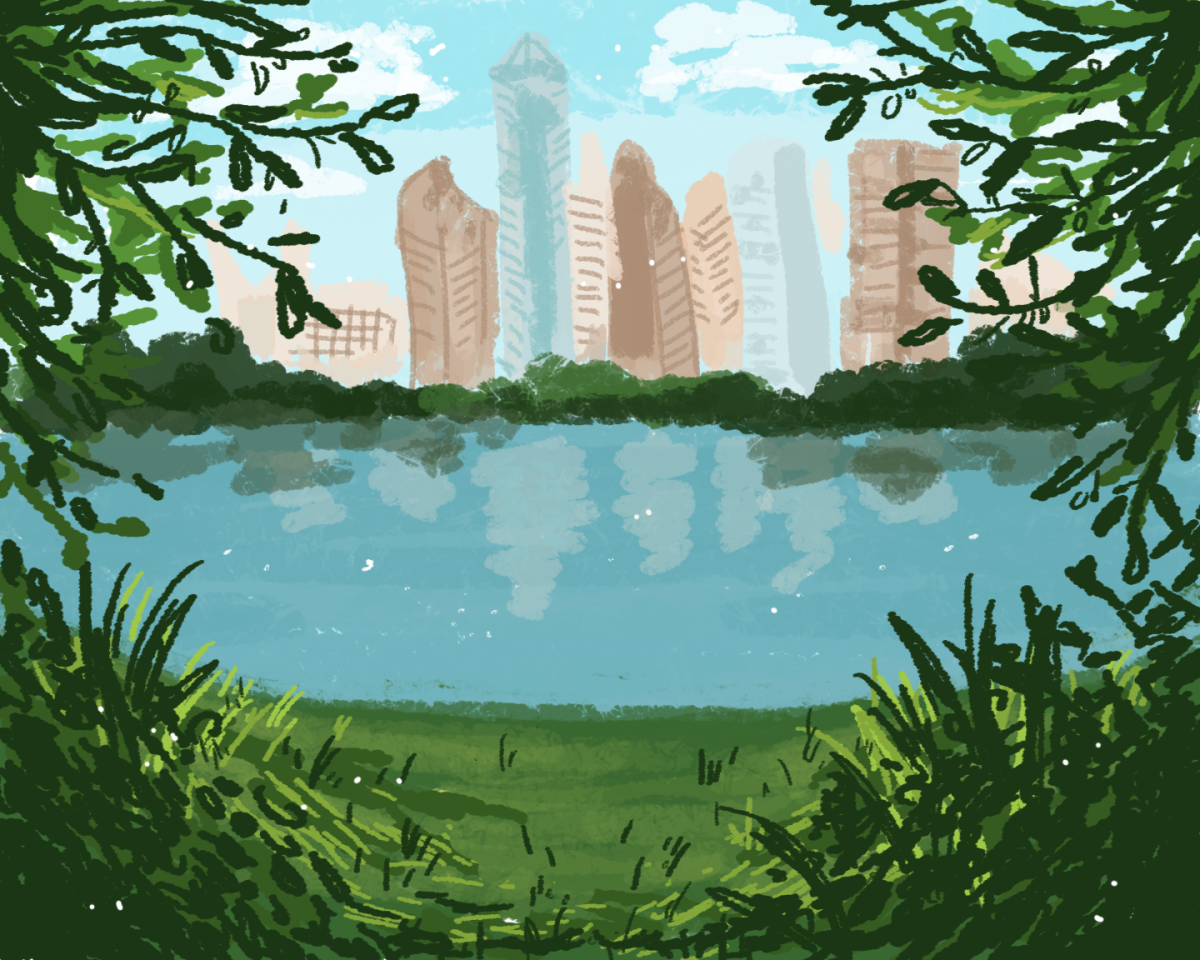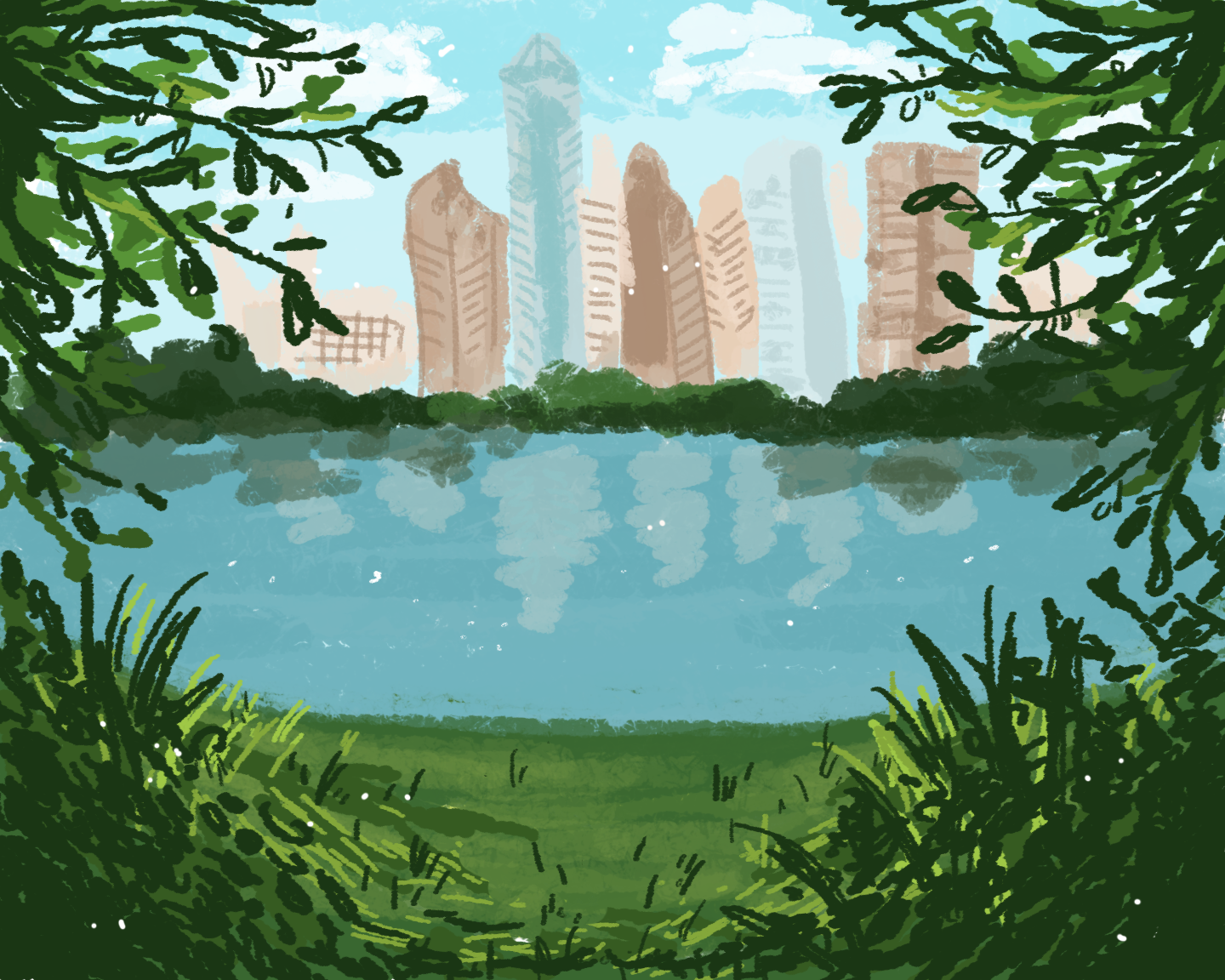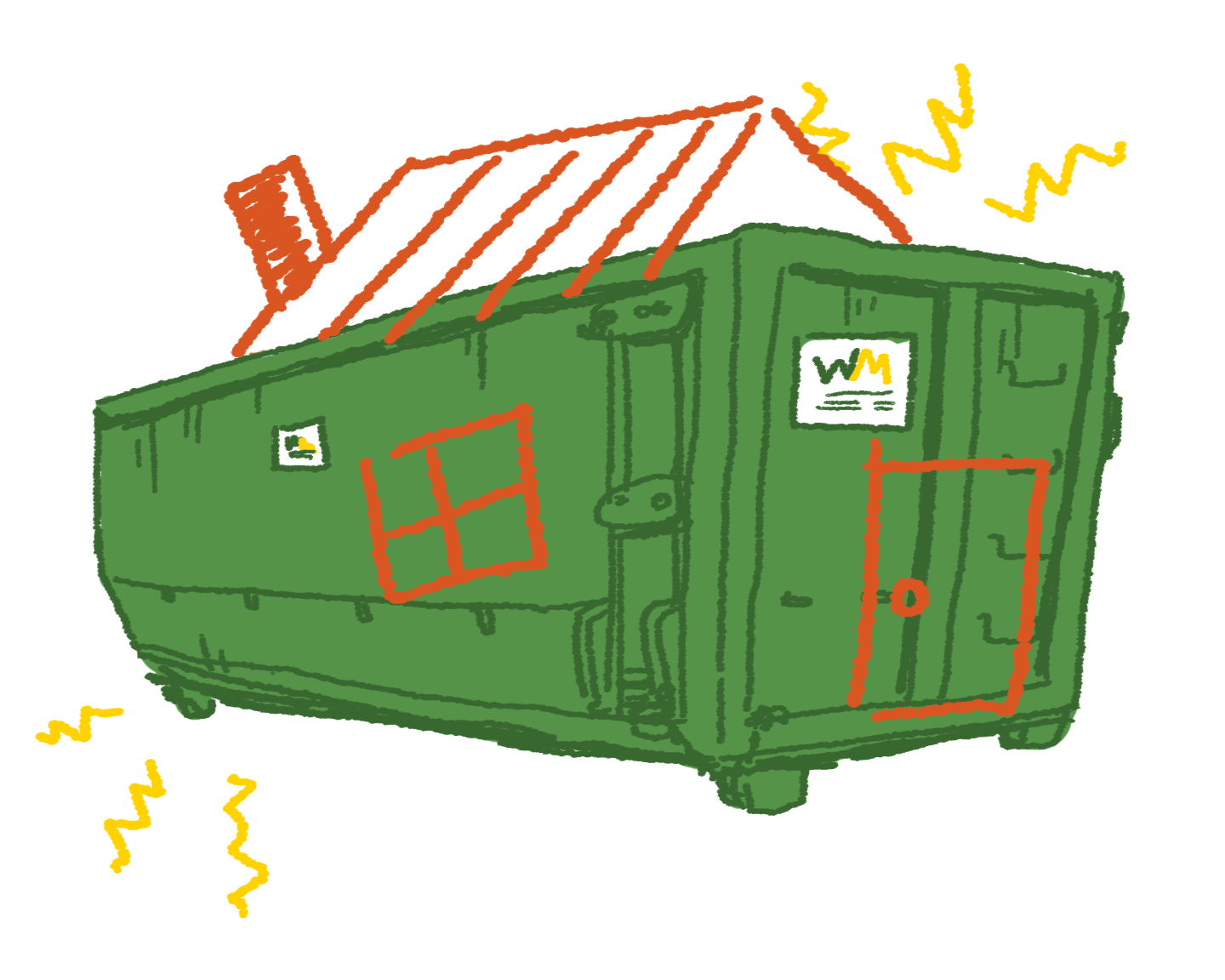Editor’s Note: This story originally appeared in Digital Issue V.
Known for its plethora of bikes, trees and reusable water bottles, it’s not shocking that the city of Austin has made extensive plans to become a net-zero community by 2050 or sooner. To do this, Austin has run a grassroots campaign that challenges the everyday Austinite to do their part. The city is working with businesses and individuals to promote energy consciousness practices.
Story by Sydni Fowler
Illustrations by Sonia Margolin
To be a net-zero city, Austin would have to produce the same amount of energy (you can see the exact data here) that it uses on a day-to-day basis. This goal can be reached by doing things as grand as installing solar panels and wind turbines, or as simple as walking to work. However, it’s unclear if Austin will be able to accomplish its goal by 2050. Austinites are split. Some believe the city is well on its way to reaching this goal, while others think it will take a lot more work than what is currently being put forth.
It seems that the city of Austin has started stepping up to the task. Most of the city’s municipal buildings use solar panels as energy sources, and city employees working toward this goal believe that a lot can happen in 35 years.
Zach Baumer, Climate Program Manager at the Austin Office of Sustainability, is optimistic about the future. “If we’re looking from 2015 to 2050, we can’t even imagine the kind of technology that’s gonna change, and the things that we don’t even know about that are gonna happen,” Baumer says. “So I think it is entirely possible, and I think it’s likely, that we will get to net-zero emissions by then, and hopefully before then.”
Using the Green Business Leaders Program, Austin has reached out to local businesses that use green energy and other climate-conscious operating methods to achieve the title of “Green Business.” By filling out a scorecard to rate their eco-friendliness, Austin businesses, big and small, can become certified Green Business Leaders in their community. It’s a significant role to hold, because these green businesses help their employees and customers think green too. “Every single office building that does more right things to reduce their impact on the environment, is just one more person and one more clump of the city pushing the right way,” Baumer says.
A well-known green business in Austin is Compost Pedallers, founded in 2012 by Dustin Fedako and Eric Goff in 2012. The mission of this company is simple: to bring the Austin community together through reducing waste. They do this by picking up compostable materials from Austin homes and businesses and transporting them to local gardens and farms. At these farms, the compostable materials are allowed to cook into compost and then used to grow food that can be sold, eaten and then composted again.
In the four years that the Pedallers have operated, they have diverted over 410,000 pounds of organic material from the landfill, cutting methane emissions, which are 22 times more potent than those of carbon dioxide, by over 60 tons. “The compost that’s created as a product of our business actually sequesters carbon, so it pulls carbon out of the atmosphere,” Fedako says.
Regardless of these numbers, Fedako isn’t as confident about reaching the 2050 goal as others. He refers to Austin’s status of being coined a “green city” as a double-edged sword. “I have realized more and more in working in the green space in Austin that people have a perception of Austin being greener and performing higher on green evaluations than reality,” Fedako says. “So I think we still have a long way to go and to just kind of pat ourselves on the back and give ourselves a gold star because we are a green city is doing us a disservice.”
In the city’s 2015 municipal report card regarding the goals set in the Community Climate Plan, Austin did not meet its energy-usage or zero-waste goals in 2015. However, this may be a good thing, according to Baumer. “If we’re meeting all the targets, people would get lazy,” Baumer says. “People would sort of stop trying. So it’s almost better that we set strong targets and then push our departments to meet them.”
The goals set forth by the 2015 Community Climate Plan have been referred to as some of the most rigorous in the country, and leaders in this campaign continue to put a huge emphasis on community. The City of Austin, Green Business Leaders and everyday Austinites understand that it takes a group of like-minded people to pull off what needs to be done.
Jeff Wilson, known more widely as Professor Dumpster, because he lived in a 33-square-foot dumpster for a year, believes that innovation from startups is the key to tackling this problem. “We’re gonna have to turn up on innovation to turn down on our impact on the planet,” Wilson says.
Wilson created a program called The Dumpster Project, which inspired him to create his own startup company called Kasita. Kasita has created breakthrough energy-efficient homes right in the heart of Austin. These tiny homes allow people to live on less, a growing trend that Wilson believes can be extended into the carbon footprint realm. “To continue doing things the way we’ve been doing things won’t be good enough, but by looking into places of new innovation, it’s possible,” Wilson says.
As a college student, it may be hard to live in an energy conscious manner, but there are ways to contribute to creating a green community. There are the obvious recommendations, like walking, biking, turning off the lights and taking shorter showers. Yet students can dig deeper by avoiding traffic or unnecessary acceleration while driving, and installing fluorescent or LED light bulbs. Cutting down on beef and dairy consumption can also lead to a more sustainable environment.
Although people may disagree on the rate at which progress is being made, there is unanimous agreement on one thing: this progress is necessary, and everyone needs to take part. Luckily the Austin community is more ready than ever.













































